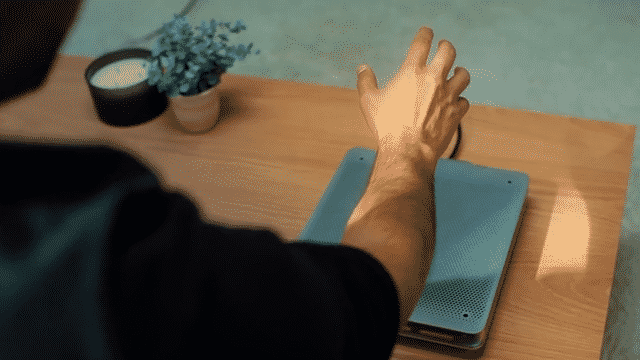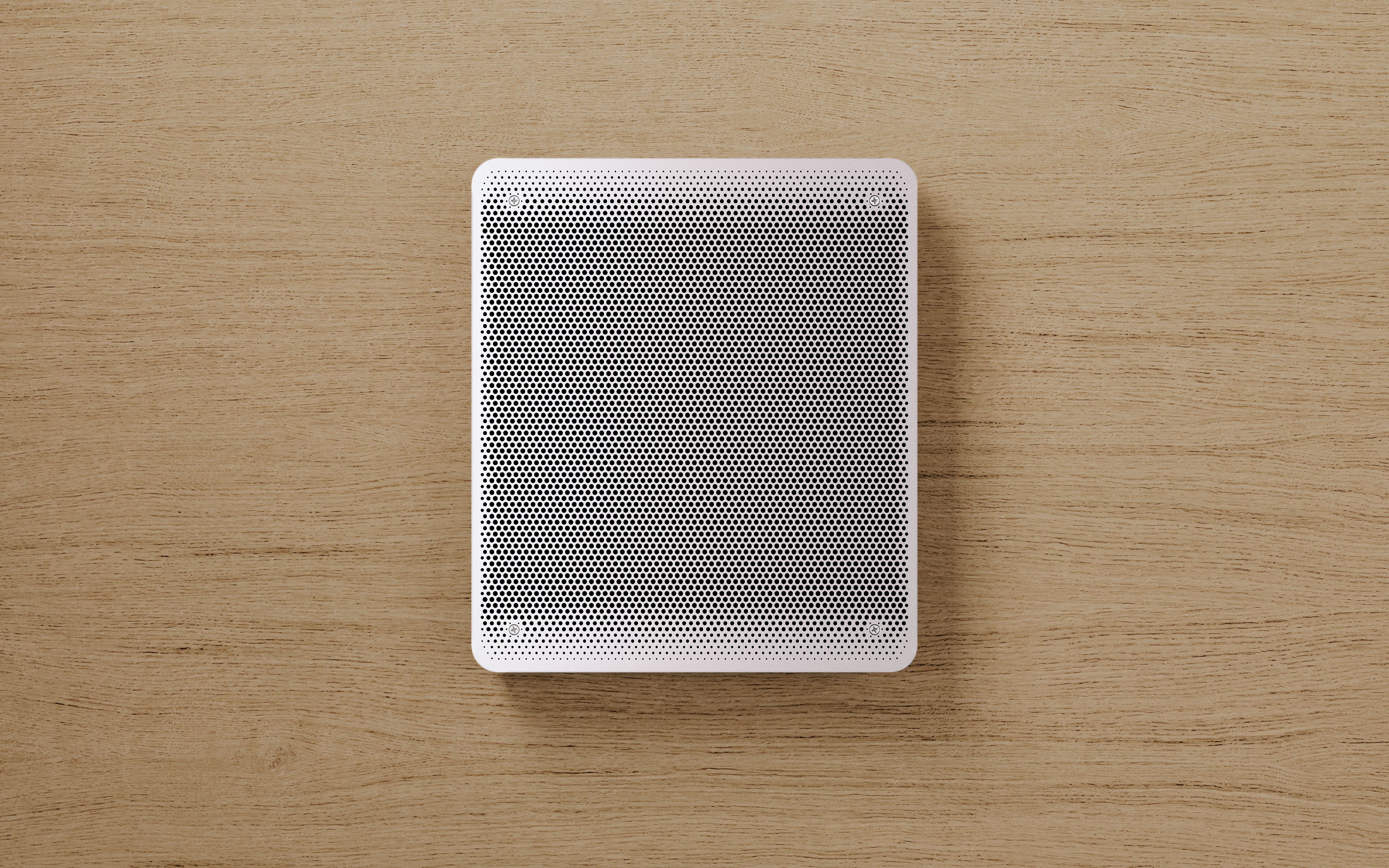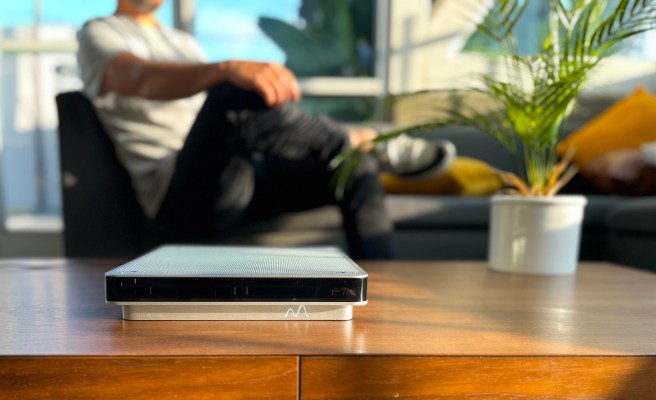Emerge this week announced a partnership with Sony, a big boon for the hardware startup. The deal involves two pieces: first, Sony will highlight Emerge’s ultrasonic tactile device in its smart TV app. Second, starting next year, Sony will begin offering a Bravia Cam bundle featuring Emerge Wave-1. A smart TV bundle could be on the way, as well.
The device is one of the more novel pieces of hardware I’ve seen in recent years. The system is effectively a speaker that fires upward, creating a three-dimension space where users get tactile feedback through concentrated sound.
“I grew up in an acoustics lab and my co-founder [Isaac Castro] worked in the medical device space, including ultrasound devices at Siemens,” says co-founder and co-CEO Sly Spencer-Lee. “We understand sound devices really well. We use a technique called beam-forming to make you feel soundwaves. The device is a phased array speaker. There are 400 of these tiny elements under the plate. If you go to a concert, you feel the subwoofer on your chest. You’re feeling the sound. All we do is concentrate the sound at a specific point in 3D space.”

Image Credits: Emerge
At the beginning of last year, Emerge launched the Wave-1 on Kickstarter. The project ultimately pulled in north of $220,000, with the tag line, “Feel VR with your hands.”
“The Emerge Wave-1 is a new ultrasound-powered tabletop device that brings touch and emotion to the metaverse,” the campaign notes. “With your bare hands, you can physically feel what you see in VR. The Emerge Wave-1 beamforms a forcefield covering beyond the footprint of the device, letting you interact with virtual content wherever your arms can reach.”
The pitch noted that the system — which resembles an electric bathroom scale with hundreds of small holes on top — would be compatible with Meta Quest 2 at launch. More VR headsets are set to arrive down the round. Emerge’s site, however, points to an altogether different (and potentially much massive market). Videos show family members holding hands remotely with one another, with no VR headsets in site.
“My grandma has the device on her coffee table and I have the device on my coffee table,” says Spencer-Lee. “We both open the app and we’re both there. The video automatically turns on, we see each other and we’re able to communicate. It kind of feels like a portal. You can instantaneously communicate with one another and touch.”

Image Credits: Emerge
The Los Angeles-based startup behind the product has been positioning it as a way for users to remotely connect with their loved ones. It’s a pitch that clearly struck a chord with Sony, as the hardware giant invests more in products like the Bravia cam — effectively a webcam for smart TVs designed to chat with remote loved ones and take work calls on the big screen.
“Sony has historically had an interest in teleconferencing solutions, mostly in professional settings including high-quality cameras, microphones, and other hardware optimized for enterprise use,” says Sony VP, Nick Colsey. “We also have software solutions to facilitate remote meetings and collaboration. I was a co-inventor of the Smart TV in 2007, and now I believe we are in another interesting time period where media will become increasingly interactive, and social communication and wellness are two key use cases that we’re eager to provide solutions for, leveraging our trusted brand and potentially category creating products like Emerge.”
The Wave-1 launched in limited commercial beta last year. I have yet to actually try out the device, so I can’t really speak to its efficacy, but I’m hoping to reach out and virtually touch someone soon.
